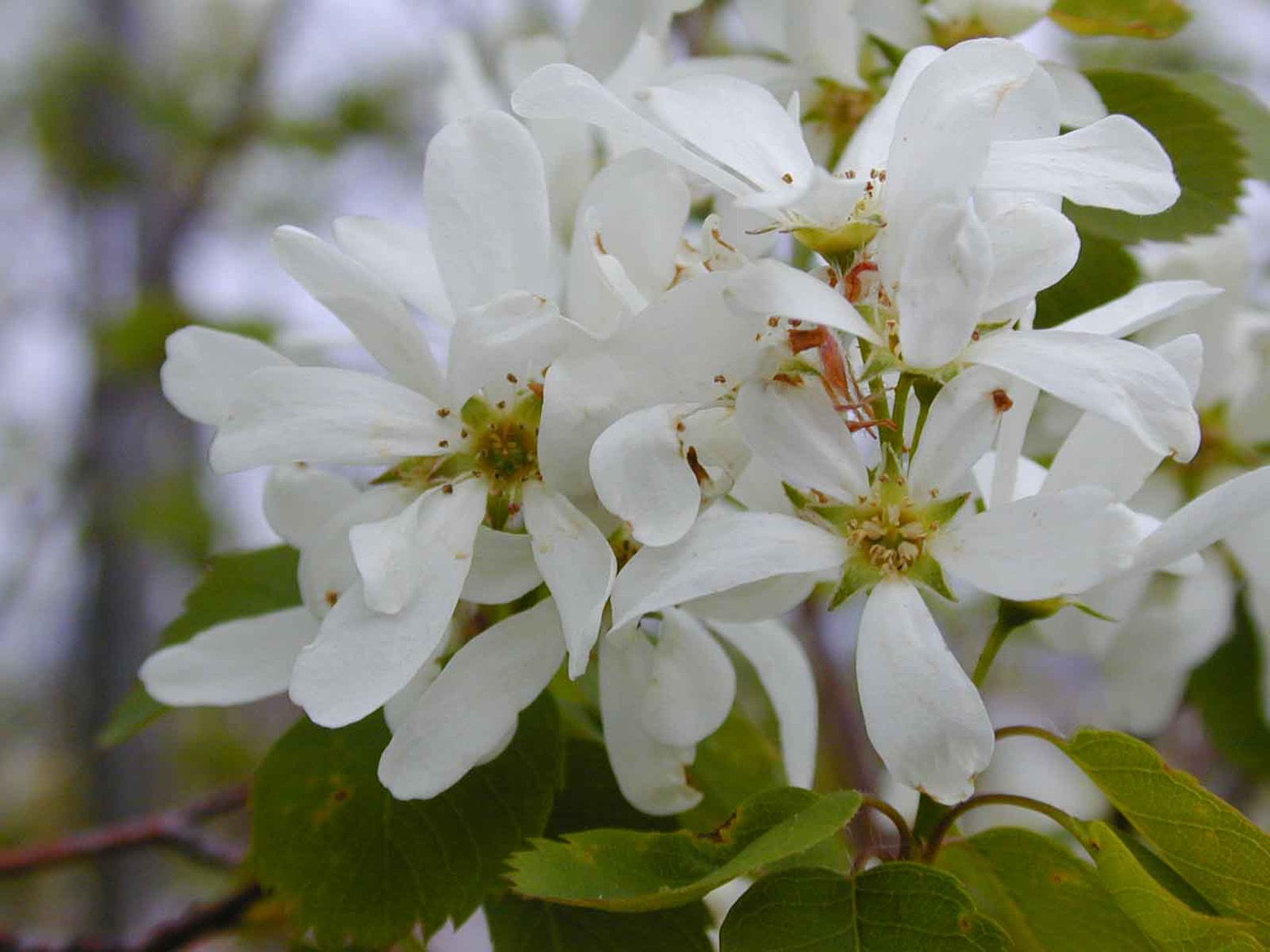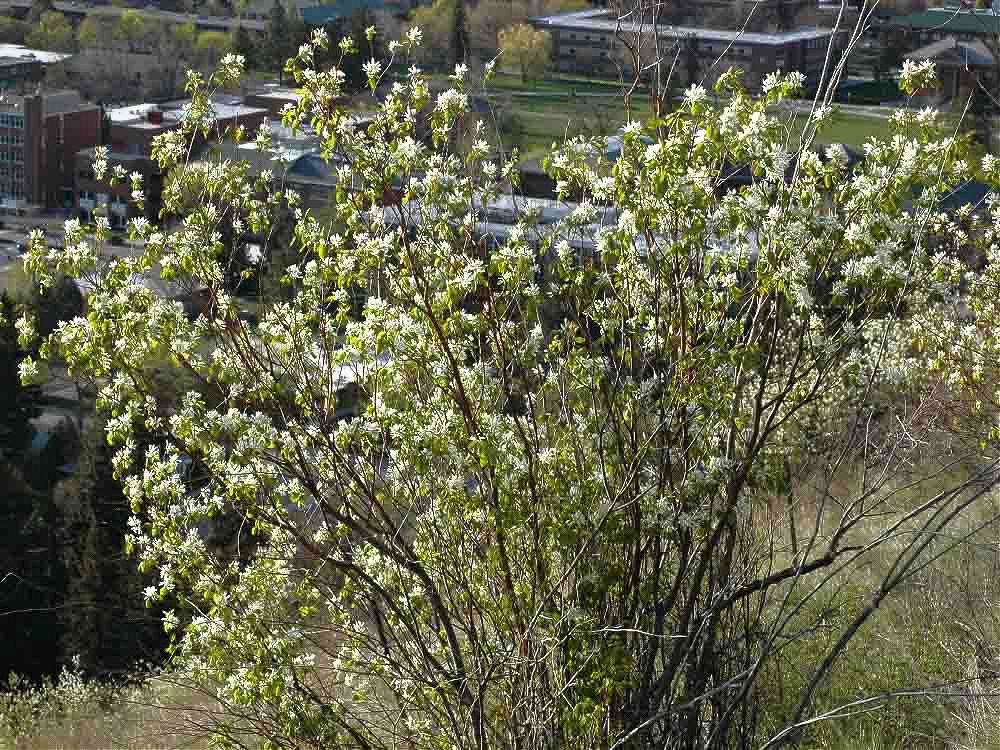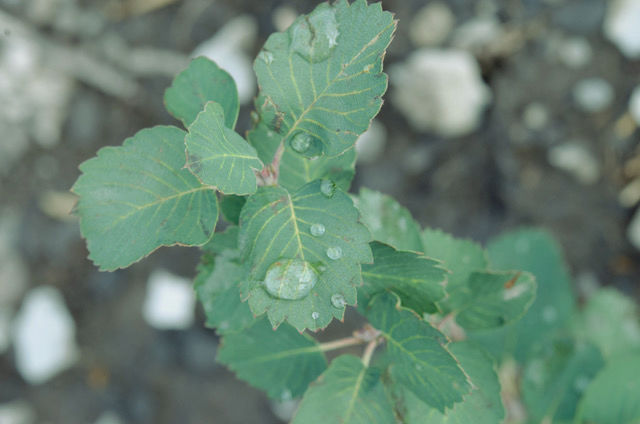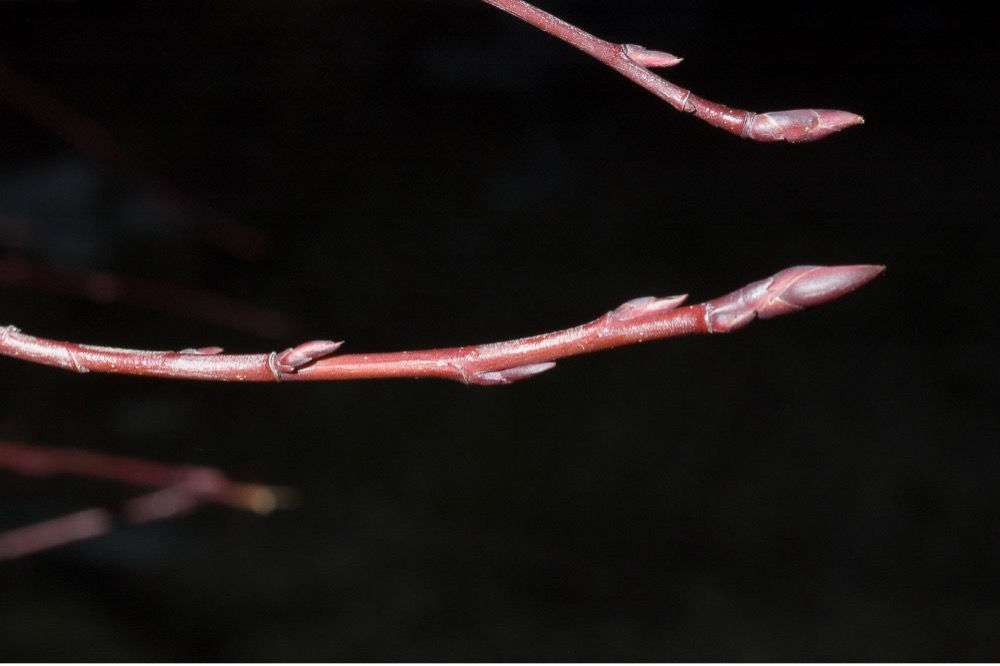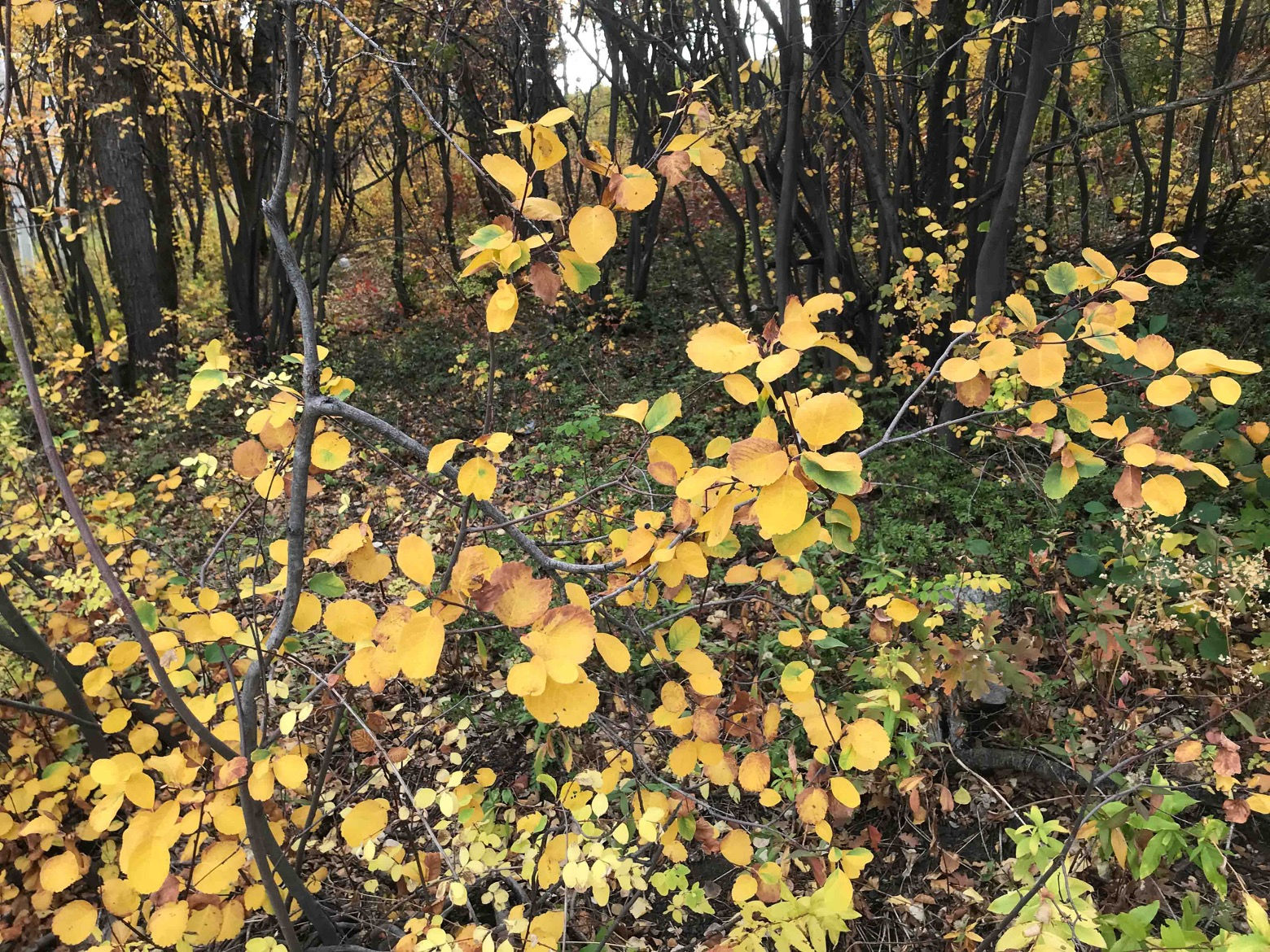Serviceberry flowers have distinctive long narrow petals and clustered in racemes, leaves are oblong to rounded, with teeth mostly at tip.
Late May is a special time of year for many of us. It’s the beginning of the gardening season, and a good time to have outdoor events since weather can be quite nice. Many ceremonies occur at this time of year, including graduations, holidays, and of course Memorial Day weekend. In many places across country the flowering of serviceberries is emblematic of this special time of year, so you might think the name “serviceberry” has something to do with this. But not so. Serviceberry simply refers to early settlers here thinking it was reminiscent of mountain ash (Sorbus spp.) back home.
Some common names refer to when it flowers: shadberry or shadblow because
when fruit is ripening this important fish is usually running, and in warm climates juneberry since that is when fruits first appear. The city of Saskatoon is also named after the Cree name for this plant giving rise to the common name saskatoonberry.
I always plant serviceberries in my yard since they provide interest year around. In spring white flowers can cover the shrub and make it a good host for pollinators. In Summer it produces blue-black to red berries that add color, at least until birds take them all. Mine rarely last more than a day or two once they are ripe due to robins savoring every last one.
Fruits can be choice, but vary widely depending on weather and local soils. During a good year I have seen branches bending to the ground under the weight of a large crop of berries. Other years no significant eatable berries may be produced at all. In fall with the right weather conditions serviceberries can also provide rich fall colors from yellows to bronze or red. In winter twigs of serviceberry are prime forage for deer elk and other wildlife species, and bark can provide winter interest as well.
Under good growing conditions our serviceberry species can form large shrubs and be covered with white blooms.
Serviceberry fruit varies in color as ripening, is usually blue to black when ripe.
 Identifying species of serviceberry (Amelanchier spp. in Rose Family) can be quite a challenge. Some botanists, including those with the Flora of North America Project consider them nearly impossible to distinguish in our area. This is because at least two species overlap here and they readily hybridize. Serviceberries have distinctive leaves with coarse teeth around upper half of leaves, and prominent veins branching off of the midrib in a parallel pattern. They have distinctive flowers clustered in racemes with five long narrow white or pinkish petals. The fruit which can be choice for jams and pies is actually a pome, e.g. like apples or pears. Leaves of some species or varieties can vary from glabrous to hairy on one or both sides, and leaves and petals vary in size depending on variety as well. These can be good characters to distinguish species or varieties but in the case of hybrids you might find many different kinds of leaves all on one plant! In our area dominant species can be A. alnifolia or A. utahensis depending on habitat and region. Some botanists also recognize a dwarf form A. pumila. Ackerfield’s flora considers them all varieties of A. alnifolia, the western serviceberry. They are particularly common on western slope of Colorado and in moist sites in mountains, though they can be found in drier rocky sites even at lower elevations where they may be able tap into groundwater below.
Identifying species of serviceberry (Amelanchier spp. in Rose Family) can be quite a challenge. Some botanists, including those with the Flora of North America Project consider them nearly impossible to distinguish in our area. This is because at least two species overlap here and they readily hybridize. Serviceberries have distinctive leaves with coarse teeth around upper half of leaves, and prominent veins branching off of the midrib in a parallel pattern. They have distinctive flowers clustered in racemes with five long narrow white or pinkish petals. The fruit which can be choice for jams and pies is actually a pome, e.g. like apples or pears. Leaves of some species or varieties can vary from glabrous to hairy on one or both sides, and leaves and petals vary in size depending on variety as well. These can be good characters to distinguish species or varieties but in the case of hybrids you might find many different kinds of leaves all on one plant! In our area dominant species can be A. alnifolia or A. utahensis depending on habitat and region. Some botanists also recognize a dwarf form A. pumila. Ackerfield’s flora considers them all varieties of A. alnifolia, the western serviceberry. They are particularly common on western slope of Colorado and in moist sites in mountains, though they can be found in drier rocky sites even at lower elevations where they may be able tap into groundwater below.
Serviceberries are mostly native to North America. Of the 20 species worldwide only two are native outside of North America. So most of the serviceberries you see in nurseries are North American natives, or crosses between them. While our species are usually small shrubs in the wild, some of the eastern varieties can form trees, such as A. laevis, and A. canadensis. With a little bit of water and good soils they can grow well here. Our native A. alnifolia (var. alnifolia) is actually grown commercially for its fruit in Saskatchewan. You might find some good tasting fruit on moist sites during good years here too!
Serviceberry leaves typical of shrubs found in Boulder.
In winter, serviceberry forms distinctive red buds and branches.
Serviceberry leaves provide good fall color.
Serviceberry: definitely a shrub for all seasons!
No matter what you call them serviceberries are an important element of our natural diversity here in Colorado and a good example of how adaptable some of our native plants can be. Now is a good time to look for them while they are in flower. They are also a good species group to consider for a restoration project or for your yard or garden. It’s a great way to attract both birds and pollinators, and provide structural diversity to create habitat for a diversity of insects.
Further reading
Using berries and more on varieties
https://backyardforager.com/amelanchier-serviceberry-juneberry/
Description of genus and challenges to classification
http://floranorthamerica.org/Amelanchier
All photos from the author
Paul Alaback
Professor Emeritus of Ecology
University of Montana
palaback@gmail.com


